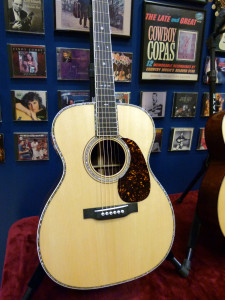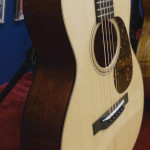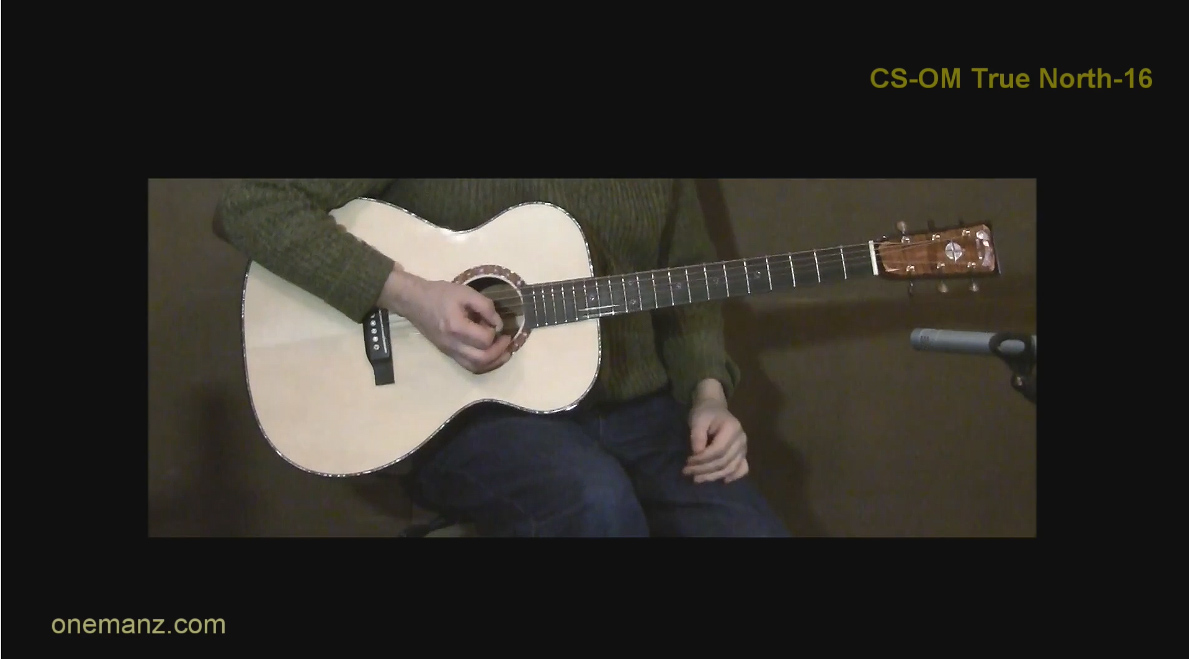A reader seeks information regarding his Martin OMC-Aura
Great Site with informative info. I had opportunity to purchase a Martin OMC-Aura couple of years ago. I liked the sound but didn’t know much about them, and never see any information about them on the different sites.
Apparently not highly regarded, I would like to know any insight into their history, attributes, faults etc.
Thanks, Charlie D
Spoon Replies:
Hi Charlie, and thank you for the nice compliment about the site. And congratulations on your Martin OMC-Aura.
I do not know if you purchased one of the actual OMC-Aura guitars, or if you acquired a custom that was ordered from a dealer like Guitar Center after the model was discontinued. So this reply is focusing on the original model. Later dealer customs may have more updated technology.
The OMC-Aura and its dreadnought counterpart the DC-Aura suffered some in terms of reputation, mainly because they were new and different. Martin loving traditionalists love Martin tradition. And when the Aura models first appeared they broke with many Martin traditions.
While they were made from the same Indian rosewood and Sitka spruce used on guitars from Martin’s Standard Series and Vintage Series, the Auras had a different neck shape, different neck joint, different bracing, a cutaway body that had fancy, non-traditional appointments, and high-tech electronics inside that protruded to the outside in the way of side-mounted controls, which all added up to a very non-traditional Martin guitar.
Pick your poison, some will disapprove of pearl trim on a guitar not in the lofty 40 Series, others will decry the non-traditional hexagons, even if they are C.F. Martin IV’s favorite fret markers. Some others will not like the way it feels, or sounds compared to other Martins, while others yet will find the very practical electronic controls offensive to their old fashioned sensibilities, not to mention a cutaway that reminds them that they never learned to play a guitar beyond basic cowboy chords.
In practical terms, part of the problem with the appreciation or depreciation of the original Aura models has to do with the technology that is somewhat out of date.
The Mortis and Tenon neck joint was a cost-cutting measure by Martin and has since been replaced by the much improved Single Dovetail neck joint on guitars of this caliber. You can read more about the technical aspects of that through the link below.
At the time, having an M&T meant the Aura models had the same construction as the 16 Series, in terms of the neck joint, neck block, and bracing (which is identical to traditional Martin bracing, but has two extra braces under the upper bought to help the much-smaller neck joint remain stable.) It also means the acoustic voice of the Aura models sounds a little different compared to traditional Martins, having brighter more effervescent fundamentals, especially in the trebles, which get a bit brash and brassy under heavier attack, and more of a separation between that bold top voice and the sympathetic undertone resonating behind it.
But that is all very subtle stuff, since they still sound like Martins compared to other makes of guitar, and they have much more of that resonant Martin bass and wavering undertone than one typically hears in a bolt-on neck guitar like a Taylor or Huss & Dalton.
So, at first glance the OMC-Aura appeared to be a 16 Series Martin dressed up with pearl trim and hallow hexagon inlays, but costing a lot more than a typical OMC-16E from that same era.
But the Aura models had higher grade rosewood and spruce finished in a high gloss, and came standard with the revolutionary Aura electronics, which can be blended into the pick-up signal, greatly increasing the “acoustic guitar sound” compared to undersaddle pickups alone.
When viewed from modern times, the old Aura models have the first generation of the Aura system, which has been streamlined while made more sophisticated in terms of controls and sound quality. But the original version is still very much a professional level system that can sound excellent when dialed in for the particular venue, PA or guitar amp.
But while the Modified Low Oval neck shape was frowned upon by many Martin traditionalists, it has withstood the test of time, and has now been adopted as the main profile in use on modern Martins, appearing on just about every 2016 Martin, except those made with vintage Martin specs.
Your guitar does not have the modern High Performance taper that starts at 1-3/4” at the nut, but tapers to a slender 2-1/8” at the 12th fret. Instead, your Aura model has the traditional Martin OM fingerboard, which measures 2-1/4” at the 12th fret, and has the 2-1/4” string spacing found on the pricey OM-42 and other OMs made before the new taper took over the Standard Series.
That is all I can think of to say today about the Martin OMC-Aura. If you are happy with your Martin, that is perfectly understandable to me. I hope you may continue to enjoy it in as musical a manner as you are able.
More Reading
Martin’s Simple Dovetail and Other Neck Joints
New 2016 Martins
Like this:
Like Loading...



